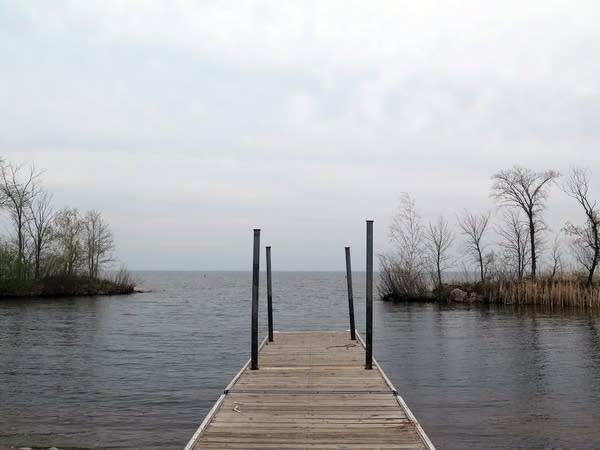DNR: Mille Lacs walleye catch-release only; no live bait

Updated 3:20 p.m. | Posted 11:55 a.m.
There will be no walleye keepers this year on Lake Mille Lacs.
In a stunning move, state conservation officials on Monday banned keeping walleye for the season that begins in mid-May. They also banned the use of live bait for those who plan to catch-and-release.
Create a More Connected Minnesota
MPR News is your trusted resource for the news you need. With your support, MPR News brings accessible, courageous journalism and authentic conversation to everyone - free of paywalls and barriers. Your gift makes a difference.
The changes for Minnesota's iconic walleye lake are dramatic and likely to be controversial. Mille Lacs' walleye population has fallen significantly in recent years and officials have struggled to balance the demands of local businesses dependent on walleye fishing with the need to rebuild the fishery.

Resort owners were hit hard last year by the state's decision to close the open-water walleye season early on Mille Lacs. The Minnesota Department of Natural Resources OK'd a winter walleye season but the warm weather put a damper on it.
At least last year, anglers were allowed to take some walleye from the lake. Last spring, the DNR put strict limits on keeping walleye from the lake but still let anglers use live bait and keep one walleye 19 to 21 inches long or longer than 28 inches.
On Monday, however, the DNR said that from May 14 to Dec. 1, anglers seeking walleye must use artificial bait and immediately release all walleye caught.
"The possibility of closing Mille Lacs to walleye fishing is greater this year than it was last," Don Pereira, the DNR's fisheries chief, said in a statement citing the concerns about the number of fish that die after being caught and returned to the water. "Even with our catch-and-release approach, the risk remains considerable."
Catch-and-release only on walleye lets the state "protect future spawners yet acknowledges the desire that fishing remain open," he added. "Not allowing harvest is a difficult decision but it provides our best option."
Beyond the catch-and-release demand, the DNR said the Mille Lacs 2016 season includes a ban on walleye night fishing.
The Mille Lacs Band of Ojibwe has said previously it would forego walleye netting on Mille Lacs this spring and only do "ceremonial netting" in 2016 to provide walleye for important cultural events. The band said it wanted to be part of the solution to Mille Lacs' falling walleye population.
The DNR, along with Great Lakes Indian Fish & Wildlife Commission, did set a walleye harvest of 40,000 pounds for this year, with 28,600 allocated to state anglers and 11,400 to tribal anglers. That's the same as last year and suggests that officials might alter the catch-and-release only rule at some point.
"A low level of allowed harvest doesn't necessarily mean slow walleye fishing," Pereira said. "As we saw last year, factors can combine to alter estimates and require adjustments. We believe that allowing no walleye harvest through catch-and-release is a reasonable yet cautious response based on in-depth analysis and citizen input from the Mille Lacs advisory committee."
The catch-and-release only decision, however, is likely to be even more of a shock since last October the DNR said fall netting surveys showed positive signs for Mille Lacs walleye, including a strong number of spawning walleye in the lake, and strong numbers of walleye born two years ago in the lake, the so-called 2013 year class.